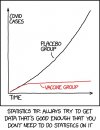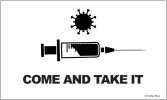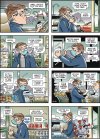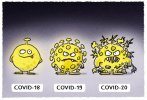Navigation
Install the app
How to install the app on iOS
Follow along with the video below to see how to install our site as a web app on your home screen.
Note: This feature may not be available in some browsers.
More options
Style variation
Guest viewing limit reached
- You have reached the maximum number of guest views allowed
- Please register below to remove this limitation
- Already a member? Click here to login
You are using an out of date browser. It may not display this or other websites correctly.
You should upgrade or use an alternative browser.
You should upgrade or use an alternative browser.
Can touching a barbell in the gym get you sick with the coronavirus?
- Thread starter Michael Scally MD
- Start date
...
On Easter weekend in 1947, New York City buzzed with an air of invincibility. The miseries of World War II were finally over, and New York, like the rest of the country, was buoyant. The future promised great things. The Polaroid Land camera had just been invented. Consumer TV sets were appearing in living rooms. The transistor radio was in the works.
What the public didn’t know was that smallpox, the scourge of civilizations, had improbably re-emerged in the city five weeks earlier.
Smallpox had plagued humankind for thousands of years. According to the World Health Organization, it claimed the lives of 300 million people in the 20th century alone.
All it takes for smallpox to spread is a cough, a sneeze or a touch. After that, it’s only a matter of days before the virus triggers fever, aches, pains and nausea. A rash appears on the face and soon covers the body, sprouting into fluid-filled pustules. Three out of 10 cases are fatal. Those who survive are often left deeply scarred, blind or both.
In early May, 10 weeks after Eugene Le Bar stepped off a bus in Manhattan, Dr. Weinstein announced that the danger had passed.
Later that year, he summed up the case in The American Journal of Public Health. “In a period of less than a month, 6,350,000 people were vaccinated in New York City,” he wrote. “Never before had so many people been vaccinated in such a city and on such short notice.”
The final tally was 12 infections and two deaths.
As a Marine combat medic in Iraq’s Al-Anbar province, Cleavon Gilman saw bodies torn apart by IEDs. He heard agonizing screams, saw burned flesh and penetrating trauma. He stood in pools of blood, tending to fellow Marines with severed spinal cords, missing limbs, and intestines bulging through gaping wounds. He emptied the pockets of the dead, collecting baby pictures and ultrasound photos, removed dog tags, and stacked bodies, sometimes two and three at a time, into refrigerated trailers. He still has PTSD, though he returned from the war 16 years ago. Even so, that experience did not prepare him for the coronavirus.
“Seeing this kind of death is not normal,” said Gilman, an emergency room physician who cared for an onslaught of Covid-19 patients in New York as the virus killed 20,000 people over a matter of weeks this spring. He’s now working in his second hot spot, Yuma, Ariz., which has nearly four times the nation’s rate of new coronavirus cases per capita, a major outbreak in its prison, and a hospital overflowing with patients.
“I’ve trained for this. I’ve been in war, and this is absolutely worse,” Gilman said. “There are no borders in this war. There is no date when I know I’m going home.”
You may have pandemic fatigue, but Gilman is flat-out exhausted. Whether it was this spring at NewYork-Presbyterian Hospital, when choruses of ambulance sirens pierced the nights, or his current work in rural Arizona where he often struggles to find open ICU beds, he’s treated Covid patients for 10 solid months. And as he sweats to save the lives of the farm workers, prison guards, and snowbirds who are his patients, he’s fighting what may be an even harder battle: to persuade people in his state, including a governor who refuses to order a mask mandate, to take the virus seriously.
Similar threads
- Replies
- 33
- Views
- 1K
- Replies
- 56
- Views
- 1K







